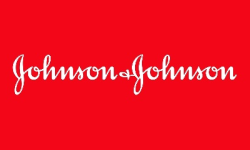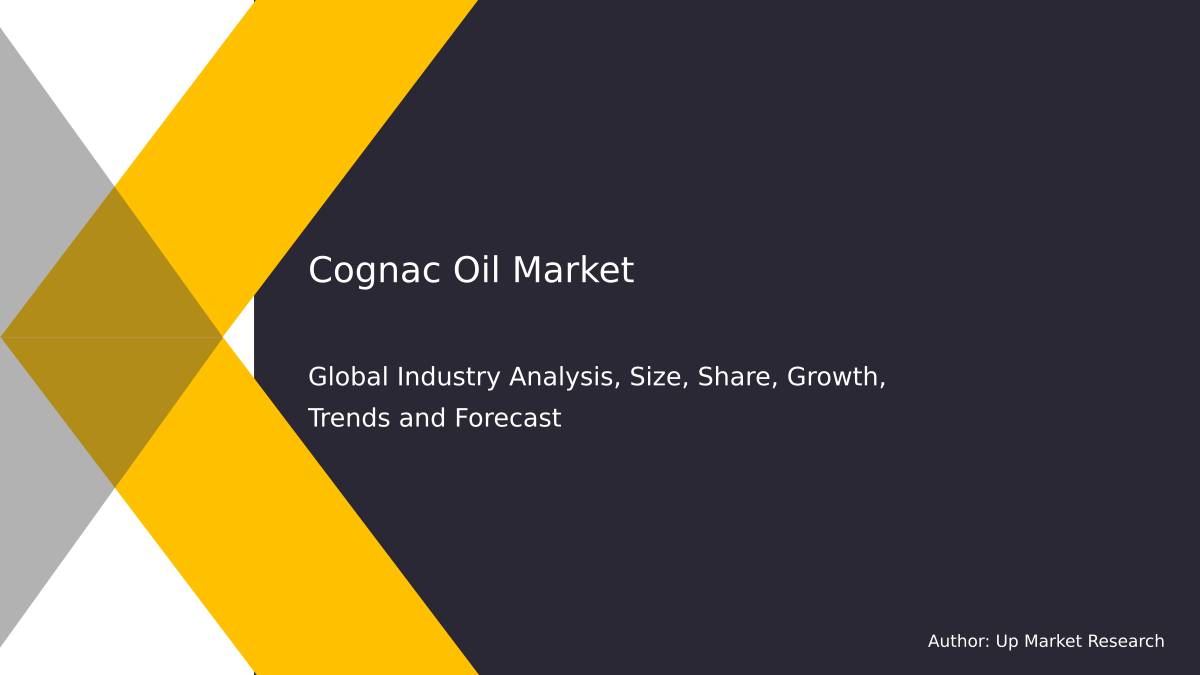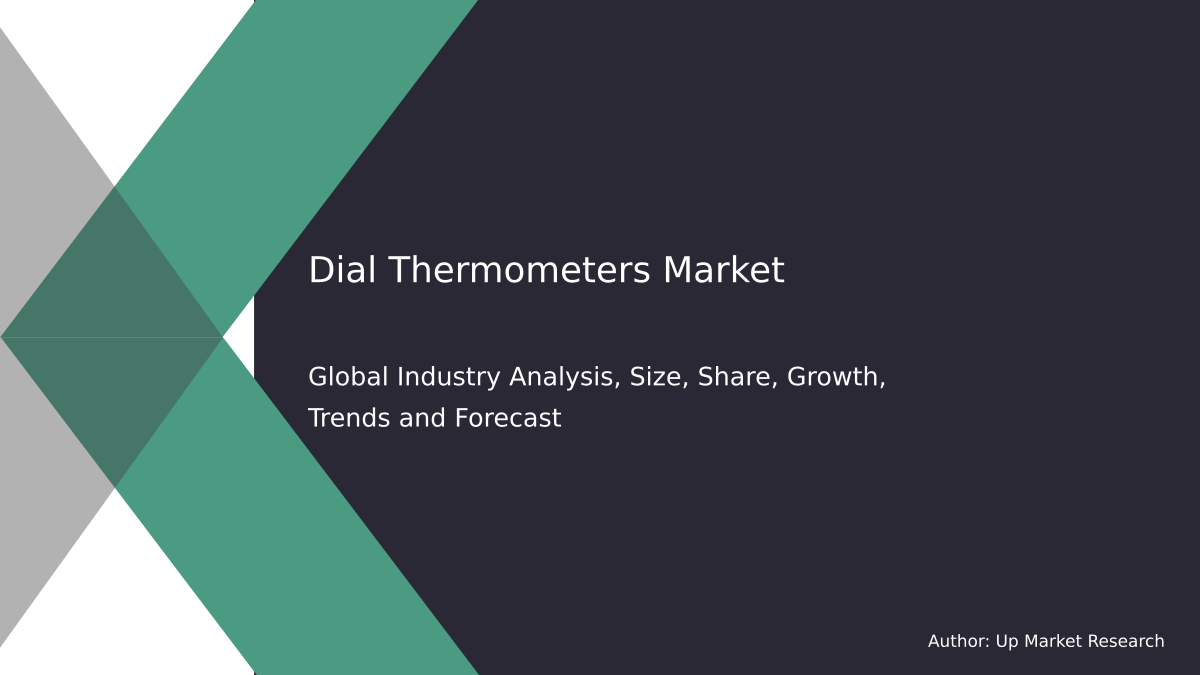
Global Beef Market by Slaughter Method (Halal, Kosher), by Cut (Shank, Loin, Brisket) and Region (North America, Latin America, Europe, Asia Pacific and Middle East & Africa), Forecast To 2028
Summary of the Report
Global beef market size was USD 300.6 billion in 2017, and is expected to grow at 3.1% between 2017-2025. The market is driven by the increasing population and rising disposable income. Beef has also become a major source of protein. Beef is the second most popular meat in the world, after pork. Due to a variety of environmental and political factors, there is a large supply-demand gap on the market.
Beef and veal (meat derived from calves), have the highest levels of protein. This will increase their demand as a major source of protein. The highest protein content is found in veal, at 33.9% per 100gm of cooked meat. This is more than any other meat. On the other hand, pork has a protein content at 29.3%, while chicken has 28.9% for 100 gm. China is a major market due to rising disposable income and increasing meat demand. China has seen a double-digit increase in disposable income, and this trend is likely to continue over the next few years. The country's improved living standards have led to a shift in meat preferences. Most people prefer beef-based products over products made from chicken and pork.
Market growth will be driven by rising urbanization and the growing need to feed the world's population. Consumers are turning to beef and related products due to the rapid spread of disease in the poultry and pork markets. The market is expected to grow because of the increasing demand for special cuts, such as kosher or halal beef.
The market will be affected by higher beef prices than other forms. Beef prices were more than 61% higher in 2016 than other protein sources like pork and poultry. This led to a decrease in demand, especially in economically disadvantaged countries. In the future, an imbalanced supply of cattle could lead to an increase in cattle prices.
Slaughter Method insights
In 2017, halal and kosher slaughter methods made up 14.8% and 18.7% of the revenue, respectively. Both halal and kosher meat are mainly consumed by the Jewish and Islamic populations. Over 80.0% of global Jewish population is located in North America, Europe, Israel, and Israel. Because of its significant benefits, North American consumers prefer kosher beef because it is safer, more delicious, and better quality.
The halal segment is primarily driven by the growing Islamic population. Because Islam bans pork consumption, beef has become a preferred meat choice in these countries. The Middle East and African countries have a higher demand, given their population.
Get Cut Insights
The beef market can be divided by cut into brisket (loin), shank (shank), and other segments. Brisket is meat that is around the breastbone. It is also the chest or pectoral muscles of the animal. This is one of the primary cuts. It is a thick, coarse-grained meat that requires a long time to cook and a low temperature to break down. It is one the most flavorful cuts and can be used to make corned beef and pot roast. You can slow-cook it in a barbecue or smoker.
In terms of revenue, the shank segment will see a 3.3% CAGR during the forecast period. The shank is found in the animal's forearms, just before the brisket. Because the meat is lean and can be used to make low-fat ground cattle, it is also widely used. Round, ribs and chuck are the other categories. They accounted for more than 70% of 2017's volume. In terms of revenue, the segment held the largest share.
Regional Insights
North America was the largest market accounting for 30.4%. In 2017, the U.S. was the largest producer worldwide and will continue to be the dominant market due to rising demand for processed meats. The most popular cut in the region is the loin, which is available in all restaurants. Because of their low marbling score, grass-fed products are highly valued in this region.
The United States Department of Agriculture (USDA) states that the U.S. was the largest consumer of beef in the sector as of 2017. After Uruguay, Argentina, Uruguay and Brazil, the United States is fifth in beef consumption per capita in the world. Over the forecast period, the U.S. will see an increase in Jewish and Islamic population. This is expected to drive up demand for kosher or halal-grade meats.
The Asia Pacific market will record a 4.0% CAGR in terms of revenue over the forecasting period. This is due to the growth of countries like China, Pakistan and Australia. The positive effect of the Chinese beef industry has been attributed to significant growth in disposable income and changing lifestyles.
Increasing imports of frozen beef will likely be supported by ongoing shortages in various consumer markets. Australia remains the largest supplier. India, which is one of the top exporters of frozen beef in 2017, is a major player in the market. It exported about 1,849 kilotons.
Market Share Insights & Key Companies
Due to the large number of multinational companies, the global market is extremely competitive. Market players are able to increase their production capacities by meeting increasing demand at both the global and regional levels. To expand their market reach and distribution channels, some of these players also use e-business platforms.
Tyson Foods, Inc., Cargill, Incorporated, Marfrig Global Foods S.A., NH Foods Ltd., NH Foods Ltd., St Helen's Meat Packers, Hormel Foods Corp., JBS USA, National Beef Packing Company, LLC, Vion Food Group, and Australian Agricultural Company Limited are all involved in beef processing. Retailers, chains restaurants, grocery stores and wholesalers can get fresh meat, value-added and processed meat.
Beef Market Report Scope
The Report Covers Certain Segments
This report predicts revenue growth at the global, regional and country level and offers an analysis of industry trends for each sub-segment from 2014 to 2025. Grand View Research segmented the global beef industry report by cut, slaughter method and region.
-
Reduced Outlook (Volume of Kilotons; Revenues, USD Millions, 2014-2025)
-
Brisket
-
Shank
-
Loin
-
Other
-
-
Slaughter Method Outlook (Volume of Kilotons; Revenues, USD Millions, 2014-2025)
-
Kosher
-
Halal
-
Other
-
-
Regional Outlook (Volume of Kilotons; Revenue USD Millions, 2014-2025)
-
North America
-
The U.S.
-
Canada
-
Mexico
-
-
Europe
-
Germany
-
Russia
-
Switzerland
-
-
Asia Pacific
-
China
-
Japan
-
India
-
Australia
-
South Korea
-
-
CSA
-
Brazil
-
Argentina
-
Colombia
-
-
MEA
-
These are the most frequently asked questions about this report
What is the size of the beef market?b. Global beef market size was USD 323.92 Billion in 2019, and is forecast to rise to USD 332.49 Billion in 2020.
How is the beef market growing?b. Global beef markets are expected to grow at 3.1% compound annual growth rate from 2017 to 2025, to reach USD 383.46 trillion by 2025.
Which segment had the largest share of the beef market?b. With a market share of 18.8%, Halal-certified beef dominated the beef industry in 2019. This can be attributed to an aging Islamic population worldwide. Since Islam bans pork consumption, beef has become a preferred meat choice.
What are the major players in the beef market?b. Tyson Foods, Inc., Cargill, Incorporated, Marfrig Global Foods S.A., NH Foods Ltd., NH Foods Ltd., St Helen's Meat Packers, Hormel Foods Corporation, JBS USA, National Beef Packing Company, LLC, Vion Food Group, and Australian Agricultural Company Limited are some of the key players in the beef market.
What are the driving factors for the beef market?b. Market growth is driven by the rising population, increased consumer disposable income and the emergence of beef protein as a major source of nutrition.
Up Market Research published a new report titled “Beef Market research report which is segmented by Slaughter Method (Halal, Kosher), by Cut (Shank, Loin, Brisket), By Players/Companies Tyson Foods, LLC; Vion Food Group; and Australian Agricultural Company Limited, Inc; Danish Crown; Cargill, Incorporated; Marfrig Global Foods SA; NH Foods Ltd; NH Foods Ltd; St Helen’s Meat Packers; Hormel Foods Corporation; JBS USA; National Beef Packing Company”. As per the study the market is expected to grow at a CAGR of XX% in the forecast period.
| Report Attributes | Report Details |
| Report Title | Beef Market Research Report |
| By Slaughter Method | Halal, Kosher |
| By Cut | Shank, Loin, Brisket |
| By Companies | Tyson Foods, LLC; Vion Food Group; and Australian Agricultural Company Limited, Inc; Danish Crown; Cargill, Incorporated; Marfrig Global Foods SA; NH Foods Ltd; NH Foods Ltd; St Helen’s Meat Packers; Hormel Foods Corporation; JBS USA; National Beef Packing Company |
| Regions Covered | North America, Europe, APAC, Latin America, MEA |
| Base Year | 2020 |
| Historical Year | 2018 to 2019 (Data from 2010 can be provided as per availability) |
| Forecast Year | 2028 |
| Number of Pages | 236 |
| Number of Tables & Figures | 166 |
| Customization Available | Yes, the report can be customized as per your need. |
The report covers comprehensive data on emerging trends, market drivers, growth opportunities, and restraints that can change the market dynamics of the industry. It provides an in-depth analysis of the market segments which include products, applications, and competitor analysis.

Global Beef Market Report Segments:
The market is segmented by Slaughter Method (Halal, Kosher), by Cut (Shank, Loin, Brisket).
Beef Market research report delivers a close watch on leading competitors with strategic analysis, micro and macro market trend and scenarios, pricing analysis and a holistic overview of the market situations in the forecast period. It is a professional and a detailed report focusing on primary and secondary drivers, market share, leading segments and geographical analysis. Further, key players, major collaborations, merger & acquisitions along with trending innovation and business policies are reviewed in the report.
Key Benefits for Industry Participants & Stakeholders:
- Industry drivers, restraints, and opportunities covered in the study
- Neutral perspective on the market performance
- Recent industry trends and developments
- Competitive landscape & strategies of key players
- Potential & niche segments and regions exhibiting promising growth covered
- Historical, current, and projected market size, in terms of value
- In-depth analysis of the Beef Market
Overview of the regional outlook of the Beef Market:
Based on region, the market is segmented into North America, Europe, Asia Pacific, Latin America and Middle East & Africa (MEA). North America region is further bifurcated into countries such as U.S., and Canada. The Europe region is further categorized into U.K., France, Germany, Italy, Spain, Russia, and Rest of Europe. Asia Pacific is further segmented into China, Japan, South Korea, India, Australia, South East Asia, and Rest of Asia Pacific. Latin America region is further segmented into Brazil, Mexico, and Rest of Latin America, and the MEA region is further divided into GCC, Turkey, South Africa, and Rest of MEA.

Highlights of The Beef Market Report:
- The market structure and projections for the coming years.
- Drivers, restraints, opportunities, and current trends of Beef Market.
- Historical data and forecast.
- Estimations for the forecast period 2028.
- Developments and trends in the market.
1. Halal
2. Kosher
7. By Cut:1. Shank
2. Loin
3. Brisket
- Market scenario by region, sub-region, and country.
- Market share of the market players, company profiles, product specifications, SWOT analysis, and competitive landscape.
- Analysis regarding upstream raw materials, downstream demand, and current market dynamics.
- Government Policies, Macro & Micro economic factors are also included in the report.
We have studied the Beef Market in 360 degrees via. both primary & secondary research methodologies. This helped us in building an understanding of the current market dynamics, supply-demand gap, pricing trends, product preferences, consumer patterns & so on. The findings were further validated through primary research with industry experts & opinion leaders across countries. The data is further compiled & validated through various market estimation & data validation methodologies. Further, we also have our in-house data forecasting model to predict market growth up to 2028.
How you may use our products:
- Correctly Positioning New Products
- Market Entry Strategies
- Business Expansion Strategies
- Consumer Insights
- Understanding Competition Scenario
- Product & Brand Management
- Channel & Customer Management
- Identifying Appropriate Advertising Appeals

Reasons to Purchase the Beef Market Report:
- The report includes a plethora of information such as market dynamics scenario and opportunities during the forecast period
- Segments and sub-segments include quantitative, qualitative, value (USD Million,) and volume (Units Million) data.
- Regional, sub-regional, and country level data includes the demand and supply forces along with their influence on the market.
- The competitive landscape comprises share of key players, new developments, and strategies in the last three years.
- Comprehensive companies offering products, relevant financial information, recent developments, SWOT analysis, and strategies by these players.
Chapter 2 Assumptions and Acronyms Used
Chapter 3 Research Methodology
Chapter 4 Beef Market Overview
4.1 Introduction
4.1.1 Market Taxonomy
4.1.2 Market Definition
4.1.3 Macro-Economic Factors Impacting the Market Growth
4.2 Beef Market Dynamics
4.2.1 Market Drivers
4.2.2 Market Restraints
4.2.3 Market Opportunity
4.3 Beef Market - Supply Chain Analysis
4.3.1 List of Key Suppliers
4.3.2 List of Key Distributors
4.3.3 List of Key Consumers
4.4 Key Forces Shaping the Beef Market
4.4.1 Bargaining Power of Suppliers
4.4.2 Bargaining Power of Buyers
4.4.3 Threat of Substitution
4.4.4 Threat of New Entrants
4.4.5 Competitive Rivalry
4.5 Global Beef Market Size & Forecast, 2018-2028
4.5.1 Beef Market Size and Y-o-Y Growth
4.5.2 Beef Market Absolute $ Opportunity
Chapter 5 Global Beef Market Analysis and Forecast by Slaughter Method
5.1 Introduction
5.1.1 Key Market Trends & Growth Opportunities by Slaughter Method
5.1.2 Basis Point Share (BPS) Analysis by Slaughter Method
5.1.3 Absolute $ Opportunity Assessment by Slaughter Method
5.2 Beef Market Size Forecast by Slaughter Method
5.2.1 Halal
5.2.2 Kosher
5.3 Market Attractiveness Analysis by Slaughter Method
Chapter 6 Global Beef Market Analysis and Forecast by Cut
6.1 Introduction
6.1.1 Key Market Trends & Growth Opportunities by Cut
6.1.2 Basis Point Share (BPS) Analysis by Cut
6.1.3 Absolute $ Opportunity Assessment by Cut
6.2 Beef Market Size Forecast by Cut
6.2.1 Shank
6.2.2 Loin
6.2.3 Brisket
6.3 Market Attractiveness Analysis by Cut
Chapter 7 Global Beef Market Analysis and Forecast by Region
7.1 Introduction
7.1.1 Key Market Trends & Growth Opportunities by Region
7.1.2 Basis Point Share (BPS) Analysis by Region
7.1.3 Absolute $ Opportunity Assessment by Region
7.2 Beef Market Size Forecast by Region
7.2.1 North America
7.2.2 Europe
7.2.3 Asia Pacific
7.2.4 Latin America
7.2.5 Middle East & Africa (MEA)
7.3 Market Attractiveness Analysis by Region
Chapter 8 Coronavirus Disease (COVID-19) Impact
8.1 Introduction
8.2 Current & Future Impact Analysis
8.3 Economic Impact Analysis
8.4 Government Policies
8.5 Investment Scenario
Chapter 9 North America Beef Analysis and Forecast
9.1 Introduction
9.2 North America Beef Market Size Forecast by Country
9.2.1 U.S.
9.2.2 Canada
9.3 Basis Point Share (BPS) Analysis by Country
9.4 Absolute $ Opportunity Assessment by Country
9.5 Market Attractiveness Analysis by Country
9.6 North America Beef Market Size Forecast by Slaughter Method
9.6.1 Halal
9.6.2 Kosher
9.7 Basis Point Share (BPS) Analysis by Slaughter Method
9.8 Absolute $ Opportunity Assessment by Slaughter Method
9.9 Market Attractiveness Analysis by Slaughter Method
9.10 North America Beef Market Size Forecast by Cut
9.10.1 Shank
9.10.2 Loin
9.10.3 Brisket
9.11 Basis Point Share (BPS) Analysis by Cut
9.12 Absolute $ Opportunity Assessment by Cut
9.13 Market Attractiveness Analysis by Cut
Chapter 10 Europe Beef Analysis and Forecast
10.1 Introduction
10.2 Europe Beef Market Size Forecast by Country
10.2.1 Germany
10.2.2 France
10.2.3 Italy
10.2.4 U.K.
10.2.5 Spain
10.2.6 Russia
10.2.7 Rest of Europe
10.3 Basis Point Share (BPS) Analysis by Country
10.4 Absolute $ Opportunity Assessment by Country
10.5 Market Attractiveness Analysis by Country
10.6 Europe Beef Market Size Forecast by Slaughter Method
10.6.1 Halal
10.6.2 Kosher
10.7 Basis Point Share (BPS) Analysis by Slaughter Method
10.8 Absolute $ Opportunity Assessment by Slaughter Method
10.9 Market Attractiveness Analysis by Slaughter Method
10.10 Europe Beef Market Size Forecast by Cut
10.10.1 Shank
10.10.2 Loin
10.10.3 Brisket
10.11 Basis Point Share (BPS) Analysis by Cut
10.12 Absolute $ Opportunity Assessment by Cut
10.13 Market Attractiveness Analysis by Cut
Chapter 11 Asia Pacific Beef Analysis and Forecast
11.1 Introduction
11.2 Asia Pacific Beef Market Size Forecast by Country
11.2.1 China
11.2.2 Japan
11.2.3 South Korea
11.2.4 India
11.2.5 Australia
11.2.6 South East Asia (SEA)
11.2.7 Rest of Asia Pacific (APAC)
11.3 Basis Point Share (BPS) Analysis by Country
11.4 Absolute $ Opportunity Assessment by Country
11.5 Market Attractiveness Analysis by Country
11.6 Asia Pacific Beef Market Size Forecast by Slaughter Method
11.6.1 Halal
11.6.2 Kosher
11.7 Basis Point Share (BPS) Analysis by Slaughter Method
11.8 Absolute $ Opportunity Assessment by Slaughter Method
11.9 Market Attractiveness Analysis by Slaughter Method
11.10 Asia Pacific Beef Market Size Forecast by Cut
11.10.1 Shank
11.10.2 Loin
11.10.3 Brisket
11.11 Basis Point Share (BPS) Analysis by Cut
11.12 Absolute $ Opportunity Assessment by Cut
11.13 Market Attractiveness Analysis by Cut
Chapter 12 Latin America Beef Analysis and Forecast
12.1 Introduction
12.2 Latin America Beef Market Size Forecast by Country
12.2.1 Brazil
12.2.2 Mexico
12.2.3 Rest of Latin America (LATAM)
12.3 Basis Point Share (BPS) Analysis by Country
12.4 Absolute $ Opportunity Assessment by Country
12.5 Market Attractiveness Analysis by Country
12.6 Latin America Beef Market Size Forecast by Slaughter Method
12.6.1 Halal
12.6.2 Kosher
12.7 Basis Point Share (BPS) Analysis by Slaughter Method
12.8 Absolute $ Opportunity Assessment by Slaughter Method
12.9 Market Attractiveness Analysis by Slaughter Method
12.10 Latin America Beef Market Size Forecast by Cut
12.10.1 Shank
12.10.2 Loin
12.10.3 Brisket
12.11 Basis Point Share (BPS) Analysis by Cut
12.12 Absolute $ Opportunity Assessment by Cut
12.13 Market Attractiveness Analysis by Cut
Chapter 13 Middle East & Africa (MEA) Beef Analysis and Forecast
13.1 Introduction
13.2 Middle East & Africa (MEA) Beef Market Size Forecast by Country
13.2.1 Saudi Arabia
13.2.2 South Africa
13.2.3 UAE
13.2.4 Rest of Middle East & Africa (MEA)
13.3 Basis Point Share (BPS) Analysis by Country
13.4 Absolute $ Opportunity Assessment by Country
13.5 Market Attractiveness Analysis by Country
13.6 Middle East & Africa (MEA) Beef Market Size Forecast by Slaughter Method
13.6.1 Halal
13.6.2 Kosher
13.7 Basis Point Share (BPS) Analysis by Slaughter Method
13.8 Absolute $ Opportunity Assessment by Slaughter Method
13.9 Market Attractiveness Analysis by Slaughter Method
13.10 Middle East & Africa (MEA) Beef Market Size Forecast by Cut
13.10.1 Shank
13.10.2 Loin
13.10.3 Brisket
13.11 Basis Point Share (BPS) Analysis by Cut
13.12 Absolute $ Opportunity Assessment by Cut
13.13 Market Attractiveness Analysis by Cut
Chapter 14 Competition Landscape
14.1 Beef Market: Competitive Dashboard
14.2 Global Beef Market: Market Share Analysis, 2019
14.3 Company Profiles (Details – Overview, Financials, Developments, Strategy)
14.3.1 Tyson Foods
14.3.2 LLC; Vion Food Group; and Australian Agricultural Company Limited
14.3.3 Inc; Danish Crown; Cargill
14.3.4 Incorporated; Marfrig Global Foods SA; NH Foods Ltd; NH Foods Ltd; St Helen’s Meat Packers; Hormel Foods Corporation; JBS USA; National Beef Packing Company
The global Beef market has been segmented based on
By Slaughter Method
- Halal
- Kosher
- Shank
- Loin
- Brisket
- Asia Pacific
- North America
- Latin America
- Europe
- Middle East & Africa
- Tyson Foods
- LLC; Vion Food Group; and Australian Agricultural Company Limited
- Inc; Danish Crown; Cargill
- Incorporated; Marfrig Global Foods SA; NH Foods Ltd; NH Foods Ltd; St Helen’s Meat Packers; Hormel Foods Corporation; JBS USA; National Beef Packing Company
Related Reports
Some other reports from this category!



















